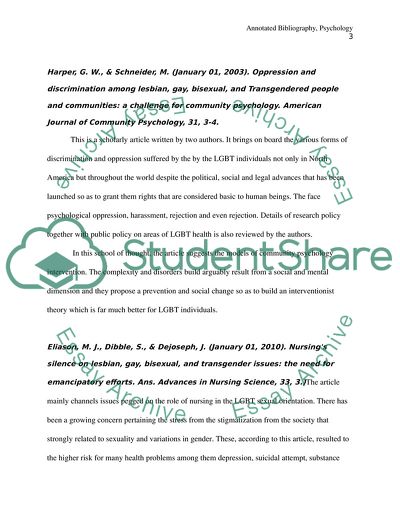Cite this document
(Psychology-Based LGBT Issues in the Bibliographical Assortment Annotated Bibliography Example | Topics and Well Written Essays - 2000 words, n.d.)
Psychology-Based LGBT Issues in the Bibliographical Assortment Annotated Bibliography Example | Topics and Well Written Essays - 2000 words. https://studentshare.org/psychology/1801761-annotated-bibliography
Psychology-Based LGBT Issues in the Bibliographical Assortment Annotated Bibliography Example | Topics and Well Written Essays - 2000 words. https://studentshare.org/psychology/1801761-annotated-bibliography
(Psychology-Based LGBT Issues in the Bibliographical Assortment Annotated Bibliography Example | Topics and Well Written Essays - 2000 Words)
Psychology-Based LGBT Issues in the Bibliographical Assortment Annotated Bibliography Example | Topics and Well Written Essays - 2000 Words. https://studentshare.org/psychology/1801761-annotated-bibliography.
Psychology-Based LGBT Issues in the Bibliographical Assortment Annotated Bibliography Example | Topics and Well Written Essays - 2000 Words. https://studentshare.org/psychology/1801761-annotated-bibliography.
“Psychology-Based LGBT Issues in the Bibliographical Assortment Annotated Bibliography Example | Topics and Well Written Essays - 2000 Words”. https://studentshare.org/psychology/1801761-annotated-bibliography.


